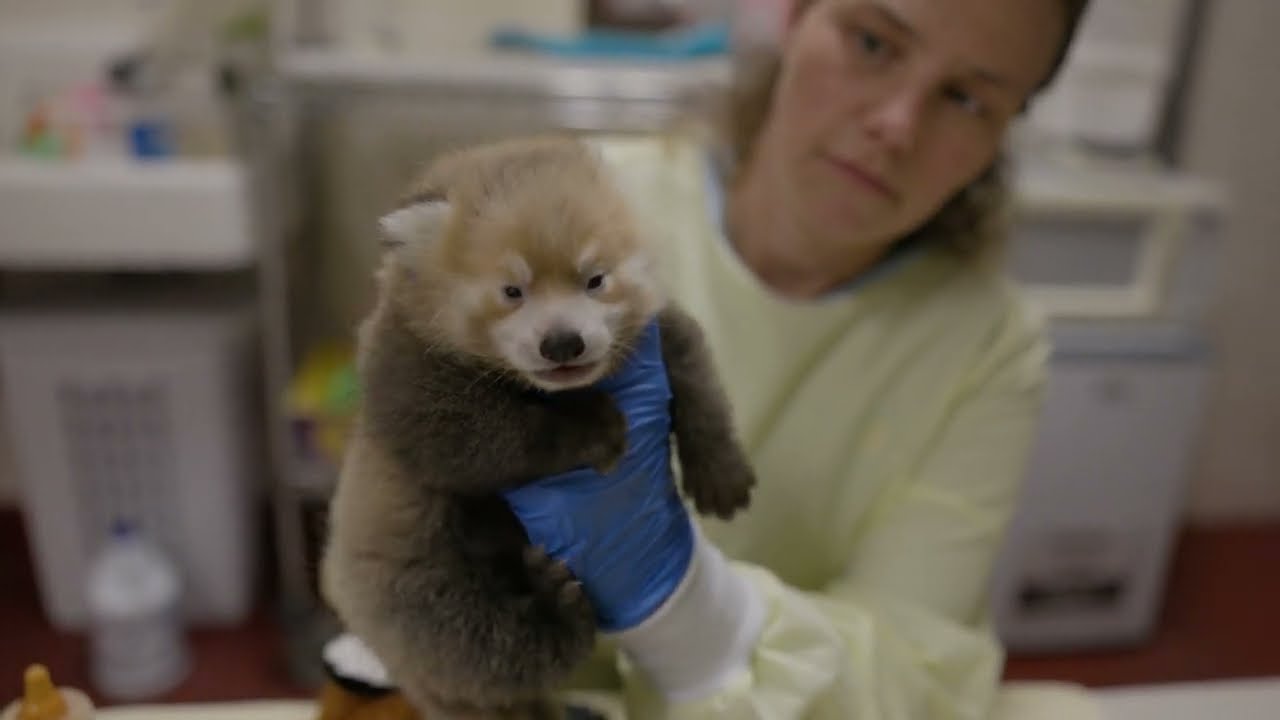Summary:
– Red panda cub being hand-reared due to injuries caused by the mother.
The animal care team steps in to provide care and help the cub recover.
– Importance of zoos in conservation efforts and animal welfare.
– Unique and fascinating aspects of red pandas and their behavior.
– The dedication and hard work of zookeepers in rehabilitating animals.
Sometimes, nature throws us a curveball, and we find ourselves in situations where animal moms can use a hand in raising their young. One such instance occurred recently when a red panda cub had to be hand-reared due to injuries caused by its mother. This heartwarming story highlights the crucial role that animal care teams play in zoos and sheds light on the fascinating aspects of red pandas and their behavior.
So, what led to this unique situation? The keepers at our zoo noticed that the mother red panda was unintentionally causing injuries to her cub while trying to care for it. To protect and safeguard the cub, they decided to separate the two and provide specialized care for the injured cub. This decision was not taken lightly, as the bond between a mother and her offspring is incredibly strong in the animal kingdom. However, interventions like this sometimes become necessary to ensure the safety and well-being of the animals under our care.
Our animal care team has gone above and beyond in caring for this little cub. Hand-rearing a young animal is no easy task, and it requires round-the-clock attention and dedication. The dedicated keepers have stepped in as surrogate parents for the cub, providing it with the necessary nutrition, warmth, and socialization it needs to thrive. Witnessing the love and care they shower upon this tiny creature is heartwarming, and ensuring its speedy recovery is heartwarming.
This incident brings to light zoos’ significant role in conservation efforts and animal welfare. While some critics argue against the captivity of animals, situations like these remind us that zoos serve a vital purpose. Without the intervention of our animal care team, this little cub may not have survived. Furthermore, by closely monitoring the red panda population in our zoo, we can gather essential data and insights into their behavior, biology, and conservation requirements. This knowledge is invaluable when protecting these endangered species in the wild.
Now, let’s take a closer look at red pandas themselves. These adorable creatures are native to the mountainous regions of China, Nepal, India, Bhutan, and Myanmar. Despite their name, red pandas are not closely related to giant pandas. They belong to their own unique family, Ailuridae. Red pandas have a distinctive reddish-brown fur coat, with white markings on their face and a fluffy, ringed tail. Their large, round heads and expressive eyes add to their undeniable charm.
These creatures are highly adapted to their habitat. Their semi-retractable claws allow them to easily navigate tree branches, making them excellent climbers. Red pandas are primarily arboreal, spending most of their time in the trees, and they possess a specialized wrist bone that acts as a sixth digit, aiding in their climbing abilities. Their long, bushy tails serve a dual purpose – providing balance on precarious branches and acting as a cozy blanket during cold winter nights.
When it comes to their diet, red pandas are generally herbivorous. They strongly prefer bamboo and can consume up to 20,000 bamboo leaves in a day! However, their diet also includes other plants, fruits, and occasionally insects. This versatility in their diet helps them adapt to changing seasons and resource availability.
Red pandas are solitary animals except during the breeding season. Males and females come together briefly to mate, after which they separate. After a gestation period of around 90 to 150 days, a female red panda gives birth to one to four cubs. These cubs are usually blind and helpless at birth, relying entirely on their mother for care and nourishment. However, as we have witnessed, mothers sometimes need a helping hand.
In conclusion, the story of this red panda cub being hand-reared highlights our animal care team’s incredible dedication and hard work. It also serves as a reminder of the fascinating aspects of red pandas and their behavior. These unique creatures, with their adorable appearance and arboreal lifestyle, captivate the hearts of many. As zoos continue to play a crucial role in animal conservation and welfare, we can only be grateful for the efforts put forth by those who ensure the well-being and survival of species, one cub at a time.
*****
Source Description
Sometimes, animal moms can use a hand when raising their young. When keepers noticed a red panda was accidentally causing some injuries to her cub, they stepped in to care for the cub and help her recover. We thank our animal care team for their hard work caring for this little cub!

